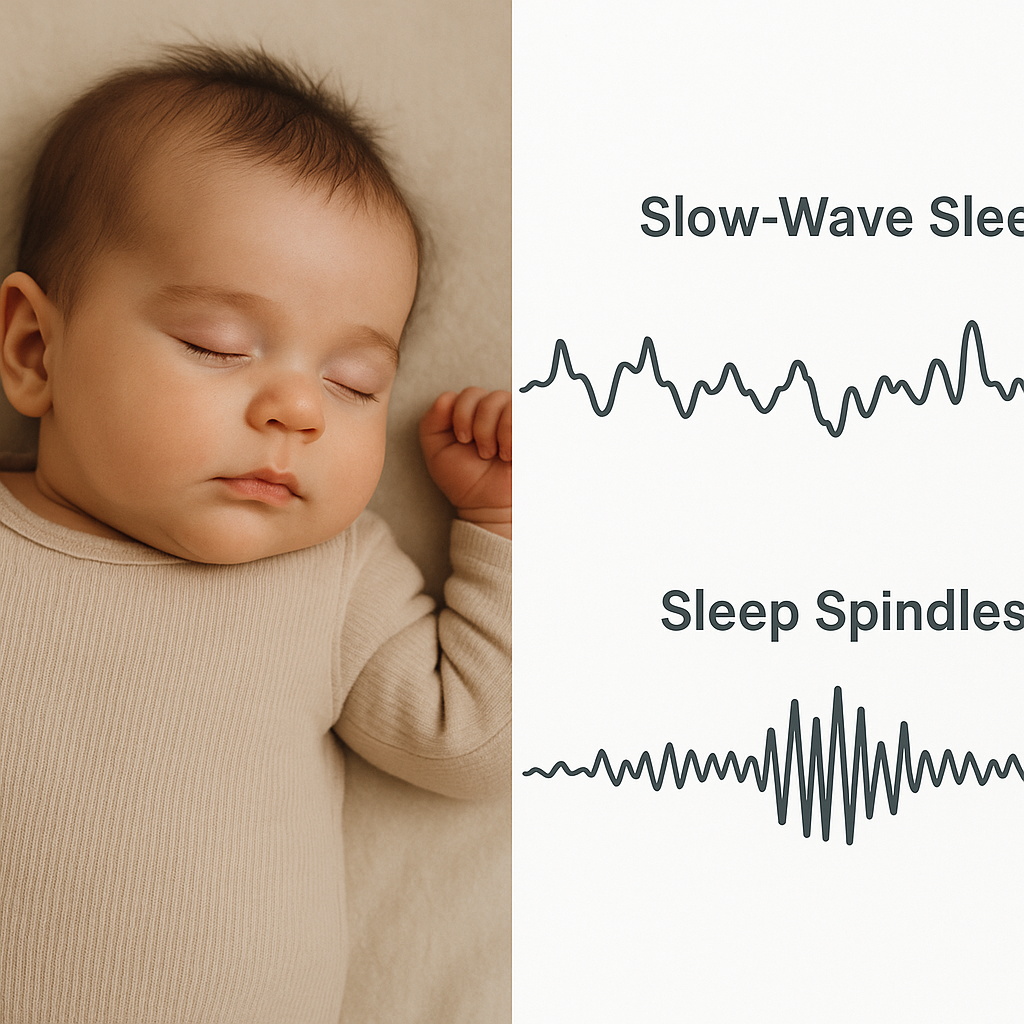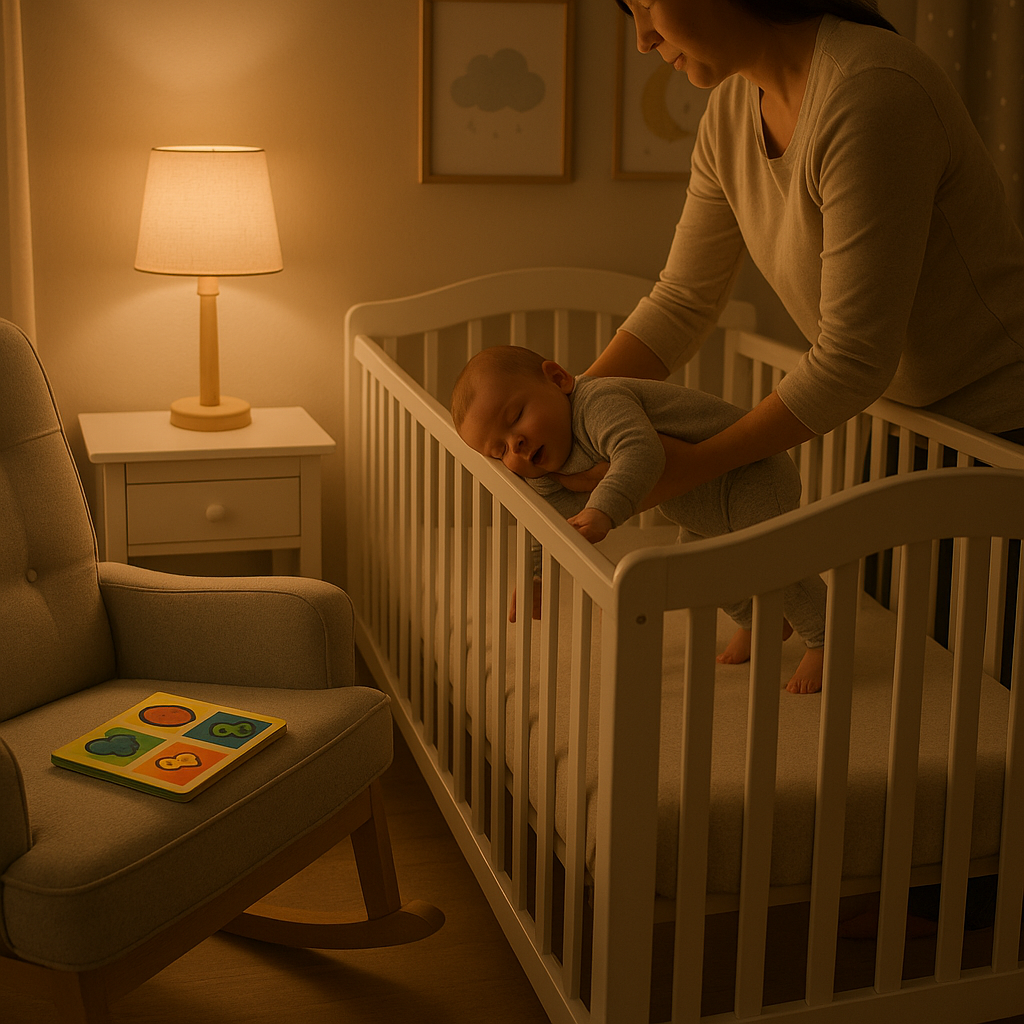Every day, your baby’s brain absorbs a flood of sights, sounds, and sensations, building the foundation for lifelong learning. Without regular naps, much of this valuable knowledge can slip away, lost to overstimulation or fatigue. The good news? A well-timed nap acts like a “save” button, securing new memories, strengthening neural connections, and stabilizing emotions. By prioritizing naps, you’re nurturing your baby’s cognitive growth and emotional resilience. This gives them a head start for a brighter future as noted in Sleep and Early Brain Development | National Institutes of Health.
- What happens inside your baby’s brain during a nap?
- How do nap length and timing shape memory retention?
- What really happens when a baby skips a nap?
- Where is the science still unclear about naps and memory?
- Your top nap-and-memory questions, answered
- How can you build a memory-boosting nap routine today?
- Why guarding nap time fuels lifelong learning
What happens inside your baby’s brain during a nap?
Deep slow-wave sleep and rapid sleep spindles work together to secure new memories and support emotional balance.
During a nap, your baby’s brain engages in a powerful process to consolidate learning and regulate emotions. Research using EEG studies shows that up to 51% of a 9-month-old’s nap consists of deep slow-wave sleep—more than double the proportion seen in Infant Sleep Cycles: How Are They Different From Adults? | Sleep Foundation. This stage, characterized by slow, rhythmic delta waves, transfers fresh information from the hippocampus—only about 40% of its adult size at this age—to the neocortex, the brain’s long-term storage center. Imagine the hippocampus as a small, overflowing bucket; each nap pours its contents into a larger filing cabinet, clearing space for new experiences and learning.
Rapid bursts of brain activity, known as sleep spindles, further strengthen these neural connections, helping your baby retain skills like recognizing objects or understanding new words. This off-loading process does more than store memories—it resets emotional circuits, reducing overstimulation and fostering calm. It also prunes unneeded neural connections, optimizing the brain for future discoveries.
For a deeper look into how sleep stages fuel cognitive growth, explore How Sleep Boosts Your Baby’s Brain.

How do nap length and timing shape memory retention?
A 30–90-minute nap taken soon after learning can preserve up to 30% more information, boosting your baby’s ability to retain new skills.
Nap length and timing play a critical role in how well your baby retains new information. Research shows that a 30–90-minute nap taken shortly after learning helps infants consolidate memories. This preserves up to 30% more information compared to those who stay awake as per Timely Sleep Facilitates Declarative Memory Consolidation in Infants | PNAS. In a study of 9-month-olds, babies on a two-nap schedule (morning and afternoon) recalled new word-object pairs—such as associating a toy with a specific word—better than peers who skipped the morning nap. See The Memory Benefits of Two Naps Per Day During Infancy | PMC. It allows the brain to enter deep slow-wave sleep, essential for transferring memories for long-term storage.
Short “catnaps” lasting under 20 minutes rarely reach the deep sleep phase needed for memory consolidation, offering only temporary refreshment. Conversely, long naps late in the day can increase cortisol levels, a stress hormone that may disrupt nighttime sleep by pushing bedtime later. See The Cortisol Awakening Response in Toddlers: Nap-Dependent Effects | PMC. Timing is equally crucial: naps taken soon after learning maximize retention by capturing information while it’s still fresh in the hippocampus.
The 2/3/4 Nap Rhythm: This means you keep your baby awake for roughly 2 hours after morning wake-up before the first nap, 3 hours before the second nap, and 4 hours before bedtime. Infants build sleep pressure about three times faster than adults, meaning they tire more quickly. This aligns with their natural sleep-wake cycles, ensuring naps occur when sleep pressure is high, enhancing memory consolidation and emotional regulation. For tailored guidance, see age-specific schedules in Baby Sleep Needs by Age.
Practical Tip for Parents: Schedule naps strategically after learning activities, like reading a new book or practicing a new skill, to lock in those experiences. Consistency with this rhythm can improve your baby’s mood, focus, and learning capacity, setting a strong foundation for development.
What really happens when a baby skips a nap?
Skipping a nap causes “catastrophic forgetting” and spikes stress hormones, harming memory and mood.
When a baby misses a nap, the impact is significant. Studies show habitual nappers who stay awake lose up to 40% of words or skills learned that morning, even after a full night’s sleep. Read Sleep Physiology in Toddlers: Effects of Missing a Nap | PMC. This “catastrophic forgetting” happens because naps move new information from the hippocampus to the neocortex for long-term storage. Without naps, these memories fade.
Afternoon naps after a skipped morning nap show high slow-wave activity, a sign of brain fatigue, not healthy consolidation. Check Two Naps Per Day Boost Memory in Infancy | PMC. Missing a nap also raises cortisol, a stress hormone, by 100–150%, causing crankiness, clinginess, or meltdowns. See Cortisol Response in Toddlers: Nap Effects | PMC. Regular nap-skipping builds sleep debt, which hurts learning and emotional stability over time.
Tips for Parents:
- Watch for fussiness or poor focus, signs of an overtired baby.
- Offer an earlier bedtime if a nap is missed to reduce stress.
- Share this research with caregivers to protect nap schedules.
If skipped naps become a pattern, cumulative sleep debt harms learning and mood—a cycle explored in Overtired Baby? How Lack of Sleep Harms Brain Growth.
Where is the science still unclear about naps and memory?
Despite significant advances, the science of how naps influence memory in infants is still evolving. Several areas of uncertainty are being explored through cutting-edge studies:
- When Do Naps Become Optional? Longitudinal MRI studies tracking over 300 infants are investigating when hippocampal growth reduces the need for naps. The hippocampus, critical for memory consolidation, develops rapidly in early childhood, but the exact age at which naps become less essential is unclear.
- Diversity in Research Samples: Current research often relies on small, homogenous groups, primarily white, college-educated families, which limits the applicability of findings. To address this, new NIH-funded studies are recruiting diverse cohorts to better understand how naps affect memory across different cultural and socioeconomic backgrounds.
- Spindles vs. Slow Waves: Researchers are debating whether sleep spindles (rapid bursts of brain activity) or slow-wave amplitude (deep sleep intensity) play a larger role in memory consolidation. Early findings suggest both are important, but their relative contributions may vary by age. For instance, spindles may be more critical in younger infants, while slow-wave sleep may dominate as babies grow.
- Individual Variations: Emerging research is exploring how individual differences, such as temperament or neurodiversity, affect the nap-memory connection. For example, preliminary data suggest naps may have amplified benefits for neuro-diverse children, but larger studies are needed to confirm this.
For updates on infant sleep research, check Pediatric Sleep Studies | American Academy of Sleep Medicine.
Practical Tip for Parents: While science continues to evolve, current evidence supports consistent naps for optimal memory and emotional health. Stay open to new findings, and adapt nap routines as your child grows and research provides clearer guidance.
Your top nap-and-memory questions, answered
-
Does a 10-minute catnap count?
Too brief for deep slow-wave sleep, so treat it as a “snack,” not a full meal. Your baby may feel briefly refreshed but won’t reap the full memory benefit. -
Can daytime naps ruin night sleep? Consistent, early-afternoon naps actually shorten bedtime struggles by about 18 minutes. Skipping naps often backfires, raising cortisol and making nighttime settling harder.
-
When is my toddler ready to drop naps? Look for two weeks of stable mood, focus, and learning without daytime sleep. Age varies widely—anywhere from 3 to 5 years.
-
Are naps extra critical for neuro-diverse kids? Yes. Small trials show toddlers with ADHD traits improve executive-function scores by 25 % after structured naps, underscoring their added importance.
-
Is it okay if my baby only naps on the go?
Occasional stroller or car naps are fine, but regular crib naps in a dark, quiet room deliver the richest slow-wave sleep—and the strongest memory boost.
For more on developmental bumps, see Baby Sleep Regressions.
How can you build a memory-boosting nap routine today?
Link learning to sleep, keep cues consistent, and time the last nap wisely.
- Pair new skills with sleep: read a fresh picture book or practice a new sign language word, then start the nap within two hours.
- Create a “cue stack”—dim lights, white noise, and a short lullaby—so the brain knows it’s time to power down.
- End the final nap at least three hours before bedtime to let melatonin rise naturally; more tips live in How to Create a Sleep Routine.
- Share research with daycare staff to protect nap windows—your child’s hippocampus will thank you.

Why guarding nap time fuels lifelong learning
Naps are not downtime—they’re prime time. Each sleep cycle pours overflowing memories into long-term storage, steadies emotions, and readies your baby for tomorrow’s discoveries. Protecting that daily pause is one of the simplest, science-backed gifts you can give your child’s growing mind.
Explore the rest of our Sleep & Brain series—next up: Bedtime Stories and how nightly reading supercharges language growth. Until then, may every nap feel like a quiet victory for you and a giant leap for your baby’s brilliant brain.